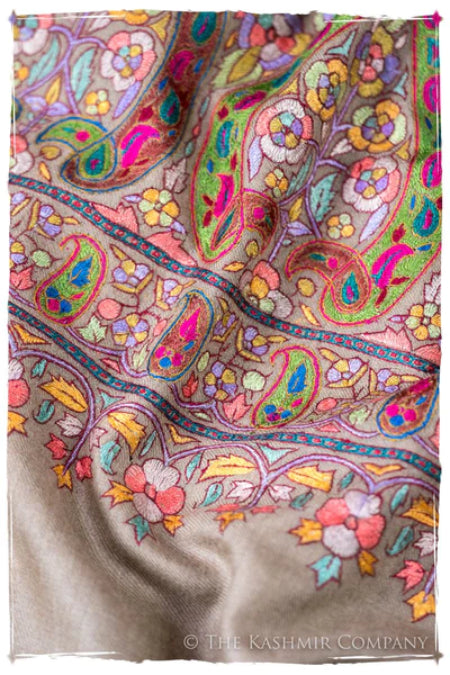
Pashmina Facts - 10 Amazing Facts About Pashmina
Share
Introduction
Pashmina, often referred to as the "diamond fiber" or "soft gold," is a luxurious and sought-after material known for its exquisite texture and warmth. Hailing from the Himalayan region, specifically Nepal and the Kashmir Valley, Pashmina has a rich history and unique properties that set it apart from other fabrics. In this blog, we'll delve into 10 amazing facts about Pashmina, shedding light on its origins, production, and qualities that make it a cherished fabric worldwide.
1. Origin of the Name "Pashmina"
The word "Pashmina" has its roots in the Persian language, where "Pashm" means "wool." This name is apt, given that Pashmina is derived from the soft undercoat of Himalayan goats, particularly the Changthangi breed found in Ladakh.
2. The Pashmina Goat's Unique Adaptation
Pashmina goats inhabit the harsh and cold climate of the Himalayan region. To survive in such extreme conditions, they have developed a fine inner coat that provides them with insulation against the frigid temperatures. It's this inner coat that is used to create the delicate Pashmina fiber.

also read:- a detailed blog on the rare and exotic changthangi goat of ladakh
3. Hand-Processing Pashmina Fiber
The production of Pashmina is a labor-intensive and traditional craft. The fiber is collected by combing the goats, and it is then meticulously cleaned and spun by hand. This manual labor contributes to the exclusivity and value of Pashmina products.

4. Pashmina and Cashmere: Are They the Same?
Pashmina is often used interchangeably with the term "cashmere," but there is a subtle difference. Cashmere is a broader term that encompasses various types of fine wool. Pashmina, on the other hand, refers specifically to the wool derived from the Pashmina goats in the Himalayan region. Thus, all Pashmina is cashmere, but not all cashmere is Pashmina.
5. Ethical and Sustainable Production
Pashmina production has historically been associated with sustainable and eco-friendly practices. The goats are allowed to graze freely on the natural grasses of the region, and their fibers are carefully collected without causing harm to the animals. This sustainable approach is an essential aspect of Pashmina's allure.
6. Ultra-Fine and Warmth-Packed
Pashmina is renowned for its thin yet incredibly warm fibers. Its microscopic diameter allows for a luxurious texture and exceptional insulation, making it one of the warmest natural fibers available. Despite its lightweight feel, Pashmina keeps you cozy even in the coldest winters.
7. The Challenging Art of Dyeing Pashmina
Dyeing Pashmina is a complex and skilled process. Achieving the perfect shade while preserving the fabric's softness and quality is a challenge that only the most experienced artisans can master. It's this attention to detail that enhances the vibrancy and longevity of Pashmina products.
8. Pashmina's Timeless Appeal
Pashmina has a timeless quality that transcends fashion trends. Its elegance and versatility make it suitable for both traditional and contemporary styles. A genuine Pashmina shawl, scarf, or blanket is a symbol of luxury and sophistication that never goes out of fashion.
9. The Art of Pashmina Embroidery
Pashmina products are often adorned with intricate and delicate embroidery. Artisans, mainly in Kashmir, have perfected the art of embellishing Pashmina with exquisite designs. These hand-embroidered pieces are highly sought after for their craftsmanship and beauty.

also read:- a detailed blog on what is pashmina embroidery?
10. Pashmina's Role in Empowering Communities
The production of Pashmina supports local communities in the Himalayan region, particularly women who play a vital role in the production process. Pashmina weaving and embroidery provide a source of income for these communities, helping to uplift their quality of life.

also read:- a detailed blog on empowering women through GI pashmina shawl
Conclusion
Pashmina, with its rich history, natural warmth, and sustainable production methods, is truly a remarkable fabric. Its origins in the Himalayan region and the meticulous craftsmanship involved in its production add to its allure. Whether you're seeking a cozy shawl for winter or an elegant accessory, Pashmina is a symbol of luxury and tradition that stands the test of time. Embrace the beauty of Pashmina and enjoy the warmth and style it brings to your wardrobe




